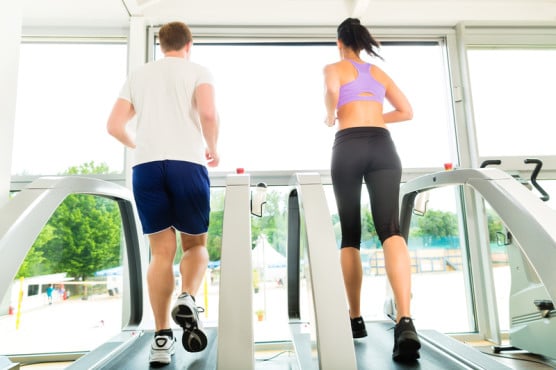
For most of us, it seems pretty intuitive to say that exercise is good for you. Over the last few decades, researchers have worked to quantify just how good it is, and in what ways.
And the results increasingly show that fitness improves nearly all aspects of health that lead to a longer life, from reducing cancer risk to improving mental health and overall well-being.
Now, researchers at Johns Hopkins University School of Medicine say they have taken that quantification a step further, developing a simple equation that can predict an individual’s risk of dying in the next decade using that person’s performance during a treadmill test.
The research was published in the March 2 issue of the journal Mayo Clinical Proceedings.
‘That’s just an outdated way of thinking of things’
“Every year, millions of patients get on a treadmill and are told if they pass or fail, and that’s just an outdated way of thinking of things,” says Haitham Ahmed, a cardiology fellow at Hopkins and lead author on the research. “Coronary disease is not binary.”
To develop the score, the researchers looked at more than 58,000 individuals between the ages of 18 and 96 who had taken a stress test between 1991 and 2009. None of the patients already had heart disease.
They then compared mortality risk — at the time of their research, about 11 percent of the patients had died — with factors like age and sex and how they performed during the treadmill test.
They found that after age and sex, the number one indicator of a person’s mortality risk was a measurement known as metabolic equivalent of task (METs), used to measure a person’s exercise capability during the test — in short, fitness.
The next highest indicator was how close an individual’s heart rate came to hitting its maximum (MPHR), since an unhealthy heart may not be able to beat fast enough to keep the blood pumping in a highly active body.
The equation, which they dubbed the Fit Treadmill Score, ended up looking like this: FIT Score = %MPHR + 12(METs) – 4(age) + 43 if female.
But what it means, ideally, is that a doctor administering a treadmill test can tell a patient more than if they passed or failed, instead providing specific information about how that patient compares to other people of similar age and gender and how they could improve their fitness outlook.
“The translation of fitness from a test to a piece of information that actually is interpretable I think is an area that needs improvement,” says Jarett Berry, a preventative cardiologist at University of Texas Southwestern. “That’s the thing here that seems most helpful.”
Some similar scores exist already, notably the Duke Treadmill Score, which was developed in 1987 to help diagnose significant coronary heart disease and and predict a risk of future heart troubles.
But that score was developed specifically to look at people who already had suspected or known heart disease.
‘We hope to empower patients to change their own destiny’
The FIT score excluded such patients in its analysis, although the test only looked at individuals who had been referred for a stress test, which generally happens after a complaint such as dizziness, trouble breathing, or chest pain.
That means it still needs verification in the population as a whole, something the team is looking to explore next.
That’s especially important given that heart disease can progress over the course of decades, Ahmed says, sometimes starting as early as a person’s teens. Having more information available can help patients intervene before their heart disease gets bad enough to result in a life-altering, or even fatal, cardiac problem.
“This gives you a snapshot, and life is not a snapshot. It’s a moving picture,” Ahmed says. “We hope to empower patients to change their own destiny, to take control of their lives and prolong their survival and get healthier.”





